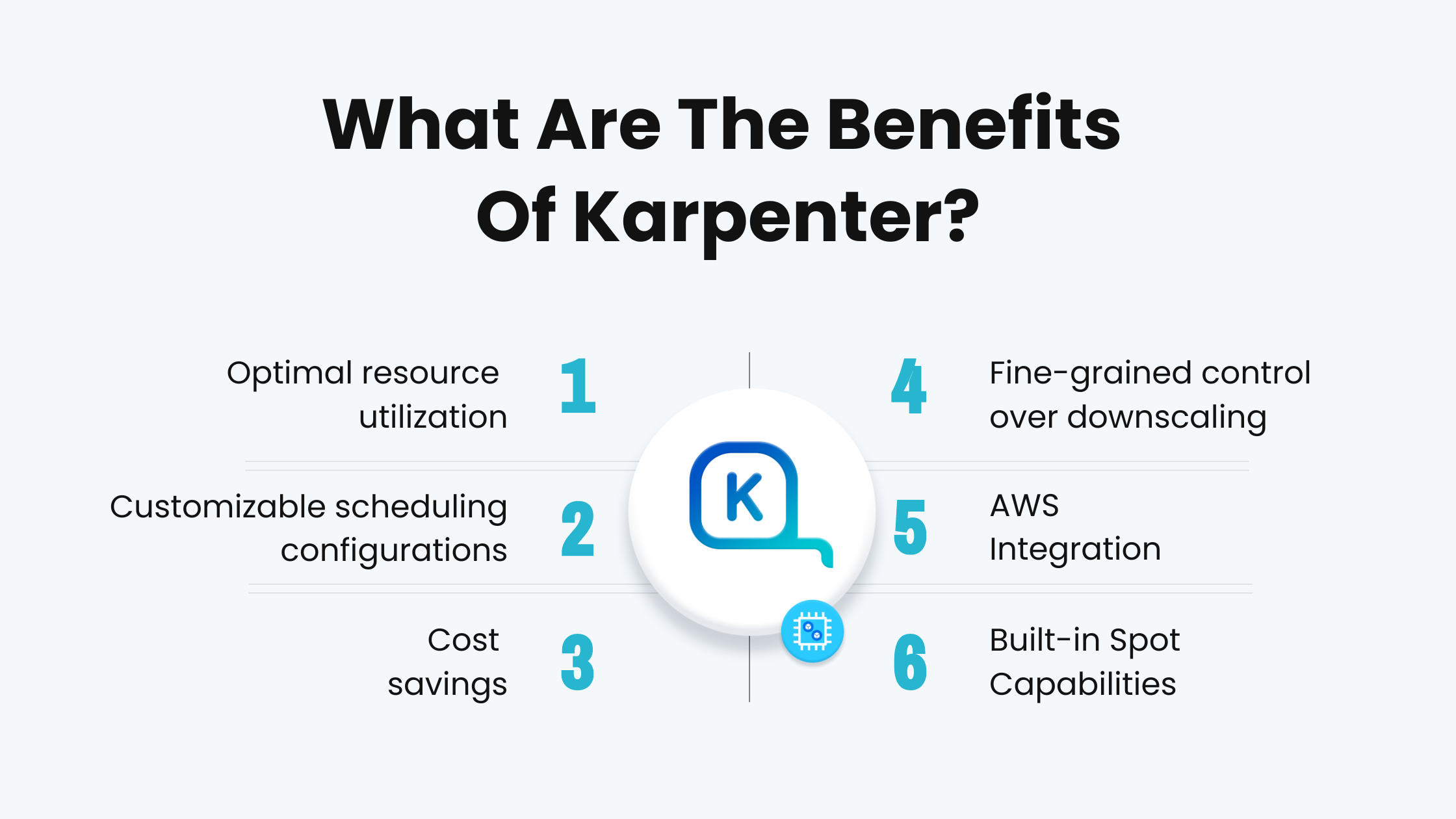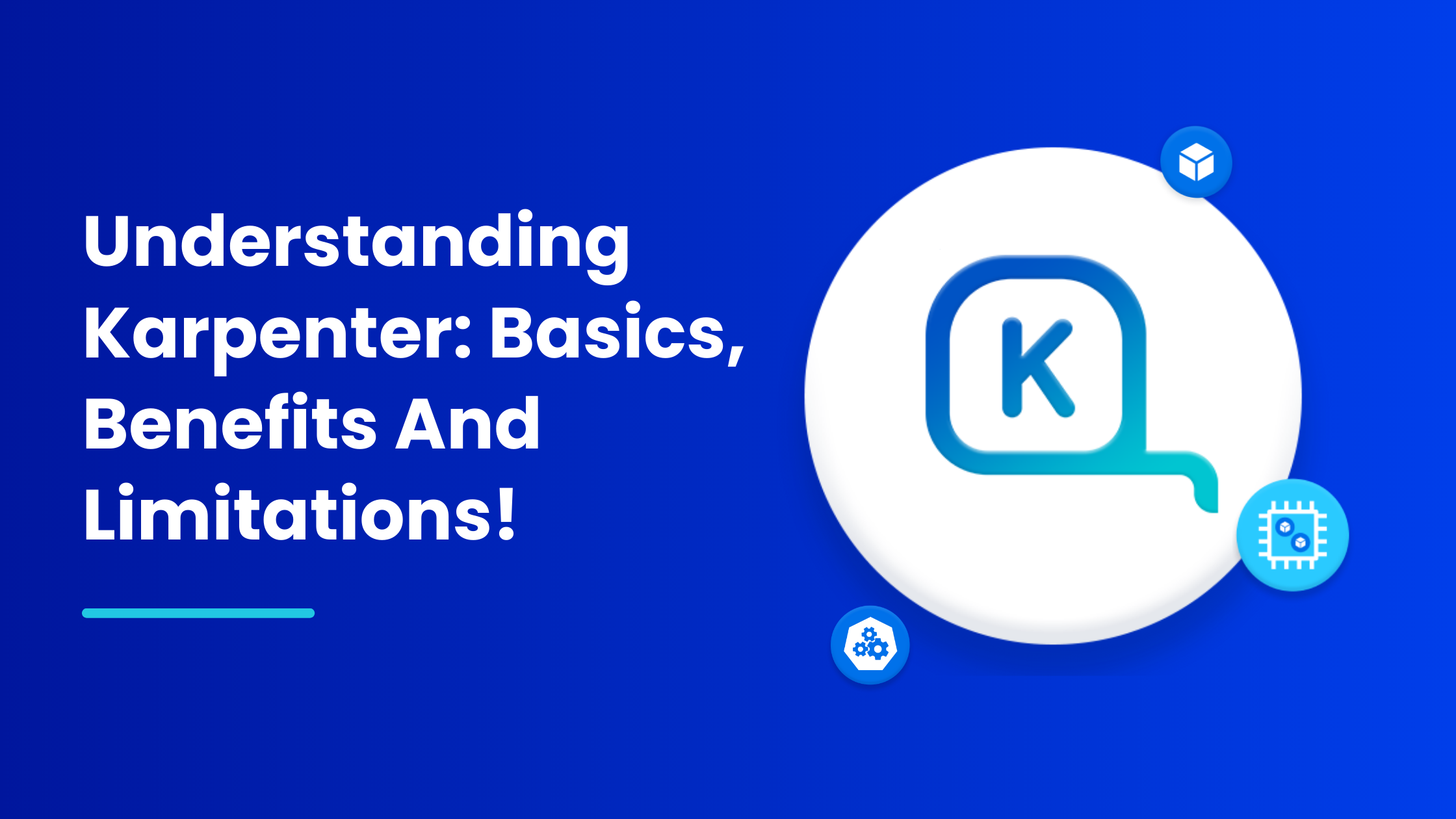Kubernetes autoscaling is essential for optimizing performance and efficiently using resources. While Cluster Autoscaler has been the go-to solution, Karpenter now provides an even more powerful and flexible alternative. In this blog, we will delve into the ins and outs of Karpenter.
What Is AWS Karpenter?
AWS Karpenter is an open-source autoscaling solution that brings significant advancements in node management to the Kubernetes community. It simplifies and automates node management, eradicating the node group abstraction by talking directly to the AWS EC2 fleet API to provision nodes.
AWS Karpenter offers intelligent scaling, cluster awareness, and customizable configurations while maintaining a modular design that seamlessly integrates with existing workflows. Whether it’s a small application or a massive workload, AWS Karpenter provides the necessary tools for scaling with ease.
How Does AWS Karpenter Work?
Karpenter’s autoscaling approach differs from the standard cluster autoscaler. Rather than adding or removing nodes based on demand, Karpenter provisions nodes based on application requirements. This approach optimizes resource utilization and reduces costs.
- It uses custom controllers and operators to manage nodes by monitoring the workload on your cluster and scaling the node groups to meet demand. Specifically, it uses custom Kubernetes resources called “provisioners” to define the resources it should provision. When an application requires more resources, Karpenter watches for any pending pods that Kubernetes can’t schedule. If necessary, Karpenter creates new resources and adds them to the cluster.
- Karpenter is intelligent enough to understand your workload’s specific resource requirements and divide resources accordingly. It can handle pod requests for configurations like arm64-based instances or GPU. It also is aware of things like a pod’s volume claim Availability Zone requirements. It can correctly determine what zone to place a node in, avoiding a common issue with cluster autoscaler not making zone-aware scaling choices.
While some may view Karpenter as just another tool, it is a powerful solution that can help scale Kubernetes workloads effectively.
What Are The Benefits Of Karpenter?

- Optimal resource utilization:
Karpenter provisions nodes based on application requirements, preventing overprovisioning and reducing costs. - Customizable scheduling configurations:
Karpenter can schedule workloads based on specific criteria like resource requirements, availability zones, and cost for improved efficiency. - Cost savings:
By optimizing resource utilization, Karpenter reduces the number of nodes required to run applications, saving money. - Fine-grained control over downscaling:
Karpenter allows users to specify rules and policies for scaling down based on workload requirements, preventing underutilization and reducing costs. - AWS Integration:
Karpenter utilizes AWS EC2 Fleet API to manage nodes directly, eliminating complex abstractions that used AWS autoscaling groups and simplifying node management. - Built-in Spot Capabilities:
Karpenter can provision Spot instances with automatic fallback to on-demand and provision new nodes as soon as an instance receives a termination notification.
What Are The Limitations of Karpenter?
While Karpenter offers several benefits, it also has some limitations, including:
- Does not optimize spend based on existing commitments:
Karpenter lacks inherent awareness of your existing commitments, such as Savings Plans or Reserved Instances, which can lead to underutilization of commitments. - Does not reconsider Spot prices in real time:
Karpenter lacks inherent awareness of Spot Market pricing. - Complexity of configurations:
It can be initially complex to configure Karpenter, and may require significant technical knowledge and expertise. - Short notice for Spot Terminations:
Karpenter relies on AWS’s 2-minute warning provided before a Spot instance terminates, which may not be sufficient time for some workloads to be optimally terminated and rescheduled.
How Does nOps Compute Copilot build on Karpenter?
Using nOps Compute Copilot with Karpenter is the easiest and most cost-effective way to scale your Kubernetes clusters. Here’s what it adds to Karpenter:
Holistic AWS ecosystem awareness of all of your existing commitments, your dynamic usage, and market pricing with automated continuous rebalancing to ensure you’re always on the optimal blend of RI, SP and Spot
Simplified configuration and management of Karpenter via a user-friendly interface
ML Spot termination prediction: Copilot predicts node termination 60 minutes in advance, automatically moving you onto stable and diverse options. You get Spot discounts, with On-Demand reliability.
Our mission is to make it easy for engineers to take action on cost optimization. Join our satisfied customers who recently named us #1 in G2’s cloud cost management category by booking a demo today.



